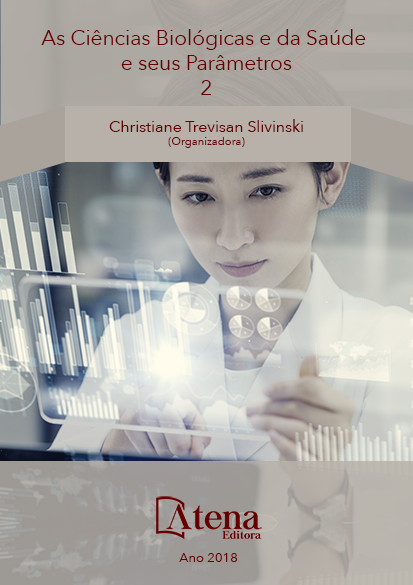
AVALIAÇÃO ESPAÇO-TEMPORAL DE CARACTERÍSTICAS FÍSICO-QUÍMICAS E MICROBIOLÓGICAS DE SOLO ALUVIAL ÀS MARGENS DO RIO UVU, CURITIBA-PR
Solos aluviais são pouco
desenvolvidos e constituídos por depósitos
de sedimentos fluviais recentes. O rio Barigui
tem parte de seu percurso situado em Curitiba,
percorrendo 18 bairros, entre eles, Santa
Felicidade. O bairro é banhado pelo rio Uvu,
que deságua na bacia do Barigui, exercendo
influência sobre a poluição hídrica da mesma,
também interferindo em parâmetros do solo nas
proximidades do rio. Objetivou-se analisar as
propriedades físico-químicas e microbiológicas
do solo aluvial do rio Uvu, verificando os
índices de atividade, diversidade, uniformidade
e riqueza dos microrganismos desse solo e a
influência da sazonalidade. Foram realizadas
10 coletas (5 no verão e 5 no inverno de 2015),
em 4 pontos distintos do rio, em profundidade de
0-5 cm. Amostras do solo foram cultivadas em
ágar nutriente e ágar Sabouraud e submetidas
a análises de atividade respiratória, pH,
matéria orgânica e textural. Os microrganismos
cultivados foram separados em morfoespécies
e em agrupamentos para contagem. Os maiores
valores de abundância de bactérias foram no
ponto Uvu IV, 56,7.10⁵ UFC gˉ¹ solo (no inverno)
e no ponto Uvu I, 52.10⁵ UFC gˉ¹ solo (no verão).
Já para fungos, os maiores valores foram
38,7.10⁵ UFC gˉ¹ solo no ponto Uvu I e 36,5.10⁵
UFC gˉ¹ solo no ponto Uvu IV, ambos no verão.
Constatou-se que as comunidades microbianas
podem ter sido afetadas pela sazonalidade e
interferência antrópica, ocorrendo em menores
quantidades no inverno, possivelmente
associadas à localização dos pontos com
melhor conservação de vegetação e maiores
índices de matéria orgânica no solo.
AVALIAÇÃO ESPAÇO-TEMPORAL DE CARACTERÍSTICAS FÍSICO-QUÍMICAS E MICROBIOLÓGICAS DE SOLO ALUVIAL ÀS MARGENS DO RIO UVU, CURITIBA-PR
-
DOI: Atena
-
Palavras-chave: Matéria orgânica do solo. Microrganismos do solo. Sazonalidade.
-
Keywords: Soil organic matter. Soil microrganisms. Seasonality.
-
Abstract:
Alluvial soils are poorly
developed and are made up of deposits of
recent fluvial sediments. The Barigui river has
part of its route located in Curitiba, covering
18 neighborhoods, among them, Santa
Felicidade. The neighborhood is sorrounded
by the Uvu river, which flows into the Barigui
wathershed, exerting influence on its water
pollution, also interfering with soil parameters
in the proximity of the river. The objective of
this study was to analyze the physico-chemical
and microbiological properties of alluvial soil
of the Uvu river, verifying the activity, diversity,
uniformity and richness index of the microorganisms of this soil and the seasonality
influence. Ten samples were collected (5 in the summer and 5 in the winter of 2015), in
4 distinct points of the river (at 0-5 cm depth). Soil samples were cultivated on nutrient
agar and Sabouraud agar and submitted to respiratory, pH, organic matter and textural
analyzes. Cultivated microorganisms were separated into morphospecies and groups
for counting. The highest values of abundance of bacteria were at Uvu IV, 56.7.10⁵
UFC gˉ¹ soil (winter) and at Uvu I, 52.10⁵ UFC gˉ¹ soil (summer). For fungi, the highest
values were 38.7.10⁵ UFC gˉ¹ soil at Uvu I (summer) and 36.5.10⁵ UFC gˉ¹ soil at Uvu
IV (summer). It was observed that microbial communities may have been affected
by seasonality and anthropic interference, occurring in smaller amounts in the winter,
possibly associated to the location of points with better conservation of vegetation and
higher levels of organic matter on the soil.
-
Número de páginas: 15
- Victoria Stadler Tasca Ribeiro


